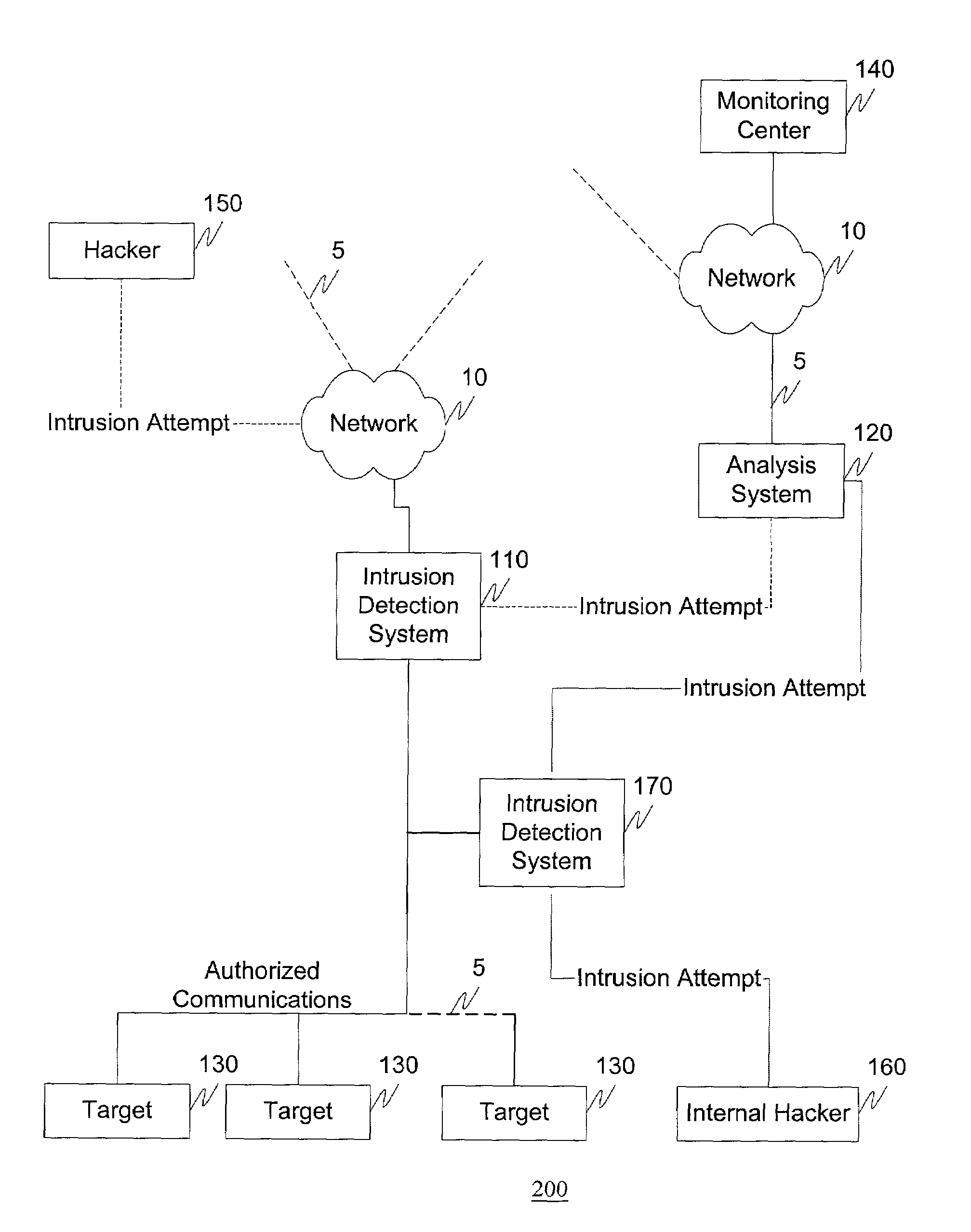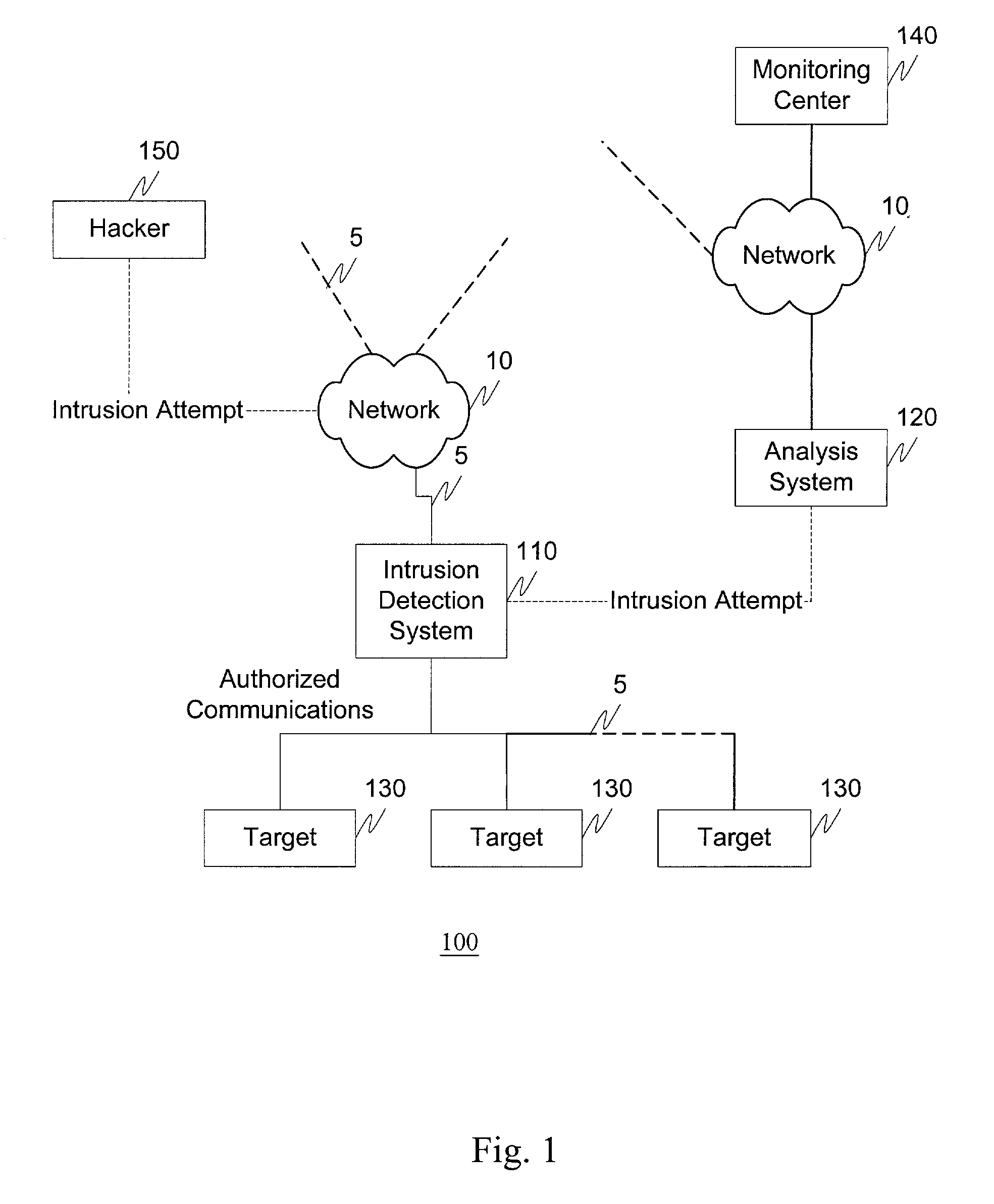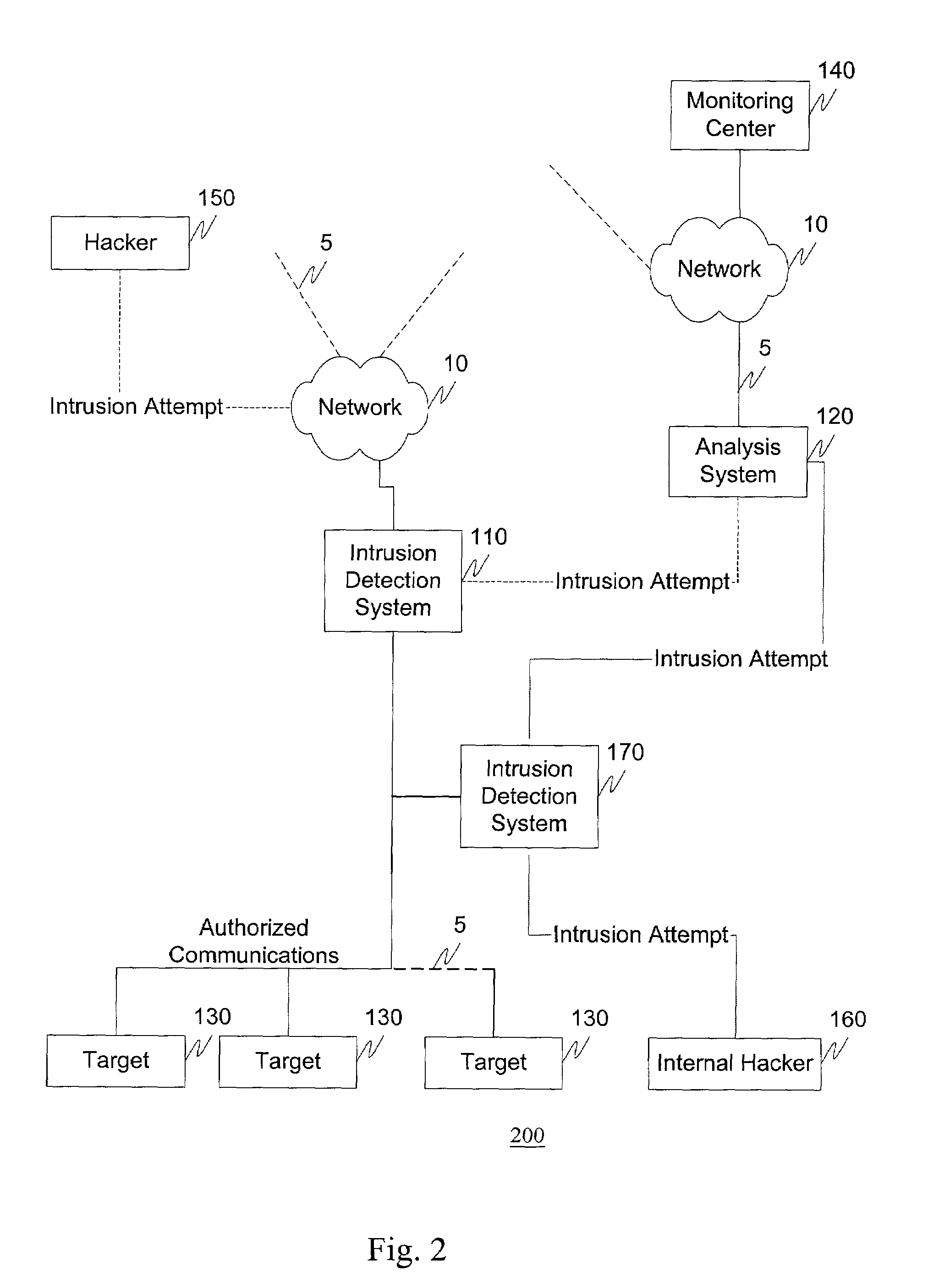Systems and methods for distributed network protection
- Summary
- Abstract
- Description
- Claims
- Application Information
AI Technical Summary
Benefits of technology
Problems solved by technology
Method used
Image
Examples
Embodiment Construction
[0030]The systems and methods of this invention, for example, deter unauthorized access attempts, i.e., hacks, by providing a method and infrastructure for determining the origin of the unauthorized access attempt, and having determined the origin, the ability to perform retaliatory actions. For example, an intrusion detection system monitors information flow to one or more portions of a protected network. Upon detection of an unauthorized access attempt, an intrusion detection system can forward information regarding the intrusion attempt to an analysis system. The analysis system can verify that the unauthorized access attempt is a bona fide attempt and, if so, perform a number of tracing and / or retaliatory actions. For example, the analysis system can initiate a tracing procedure where an attempt is made to determine the origin of the unauthorized access attempt. Alternatively, for example, the analysis system can forward information regarding the unauthorized access attempt to, ...
PUM
 Login to View More
Login to View More Abstract
Description
Claims
Application Information
 Login to View More
Login to View More - R&D
- Intellectual Property
- Life Sciences
- Materials
- Tech Scout
- Unparalleled Data Quality
- Higher Quality Content
- 60% Fewer Hallucinations
Browse by: Latest US Patents, China's latest patents, Technical Efficacy Thesaurus, Application Domain, Technology Topic, Popular Technical Reports.
© 2025 PatSnap. All rights reserved.Legal|Privacy policy|Modern Slavery Act Transparency Statement|Sitemap|About US| Contact US: help@patsnap.com



